Slow Down, You’re Missing the Best Part: A Guide to Pan Dulce & Third Wave Coffee in Mexico City
Mexico City’s coffee game is stronger than ever, and its pastry scene? Legendary. Here’s how to find the best of both.
There’s something about the smell of freshly baked pan dulce and coffee wafting through the streets of Mexico City that makes you forget every bad decision you’ve ever made. It’s not just breakfast—it’s a ritual, perfected over centuries.
Panaderías (bakeries) blend Spanish wheat, French technique, and Mexican creativity, turning simple dough into something obsession-worthy. And now, this city is hitting a killer stride in third wave coffee, fueled by direct access to some of the best coffee beans in the world, sourced from the lush farms of Chiapas, Oaxaca, and Veracruz in a way that will give you the best kind of pause.
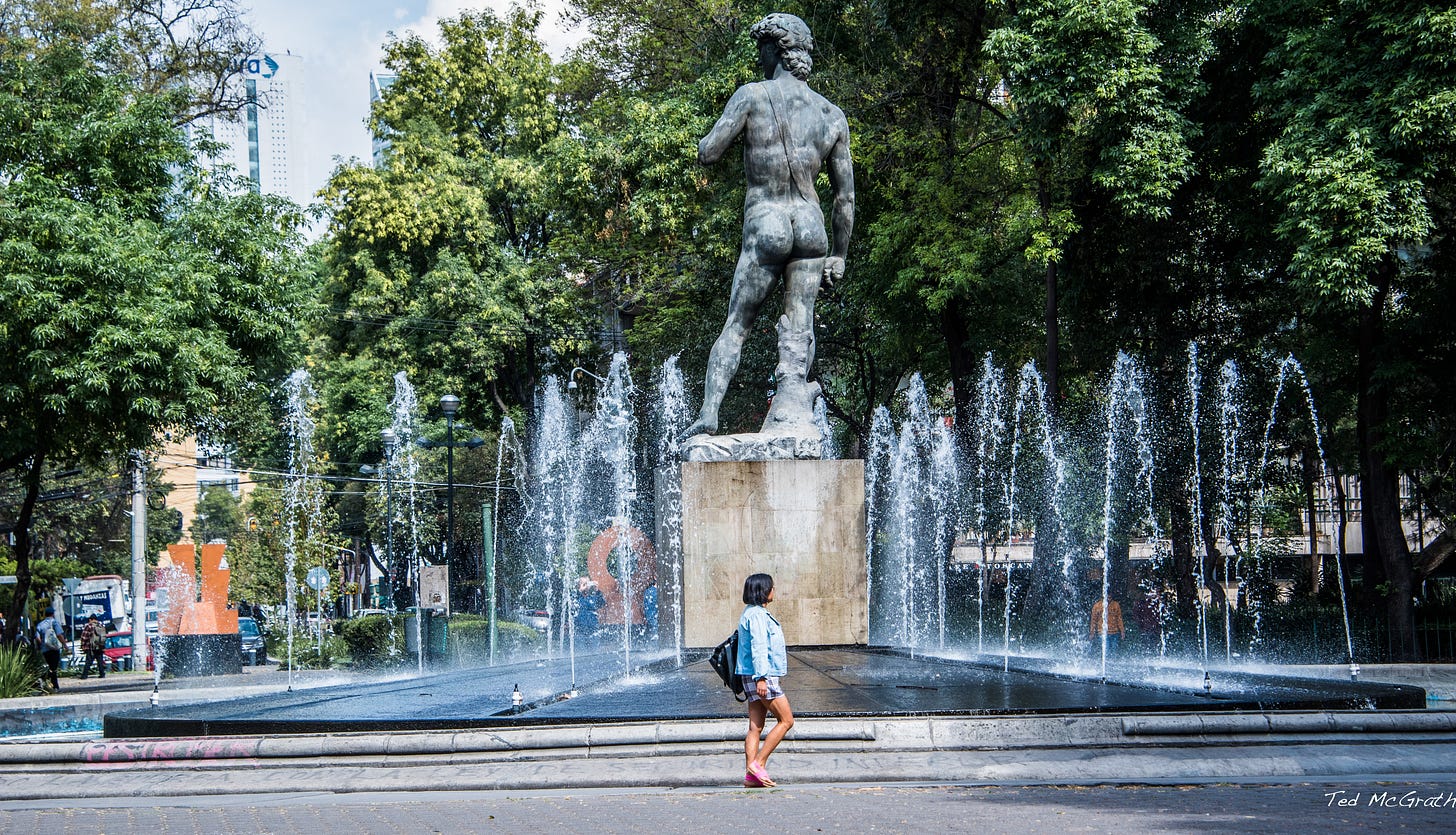
So, let’s take a morning stroll through CDMX’s café and panadería scene—exploring what makes a truly great pan dulce, where to find it, and why coffee culture in Mexico City is one of the best ways to start your day, whether you’re visiting or trying to bring a new daily ritual home.
Hey food friends! 👋 I’m Kaitlynn, half of a food-loving couple 🍜 exploring DC (& beyond) who knows the best connections happen at a shared table 🍽️. Whether you're searching for the perfect bánh mì or trying to master your grandma's marinara 🍅, I’m here with dishes (and discussions) that make life more interesting. Come hungry, leave inspired. ✨🍴
Flavors of Mexico City: The Dishes, History & Where to Eat
Mexico City is layered—historically, culturally, and even literally. From the ancient markets of the Mexica people (often called the Aztecs) to Spanish colonial plazas to today’s bustling street stalls, bakeries, and world-class restaurants, its food scene is built on centuries of cultural fusion, migration, and reinvention.
This is a culture that gave the world tacos, chocolate, AND vanilla—just to name a few. Whether you’re planning a visit, looking for inspiration in your own kitchen, or just hungry to understand the soul of CDMX, this series is your guide.
We’re diving into the real stories behind the food, uncovering the flavors that define the city, and sharing practical tips for finding (or making) something incredible to eat. From tacos to pan dulce to mezcal, Mexico City’s food story is as rich as it gets—and we’re just getting started.
Embracing a Leisurely Coffee Ritual
In much of the U.S., coffee is a fuel—purchased in haste, consumed on the move. But in Mexico City, as in its still-influential European café predecessors, coffee is an invitation to pause. The act of sitting in a café, savoring a concha (a sweet bread with a sugary seashell pattern) with your coffee, and engaging with your surroundings becomes a ritual that slows time down a little.
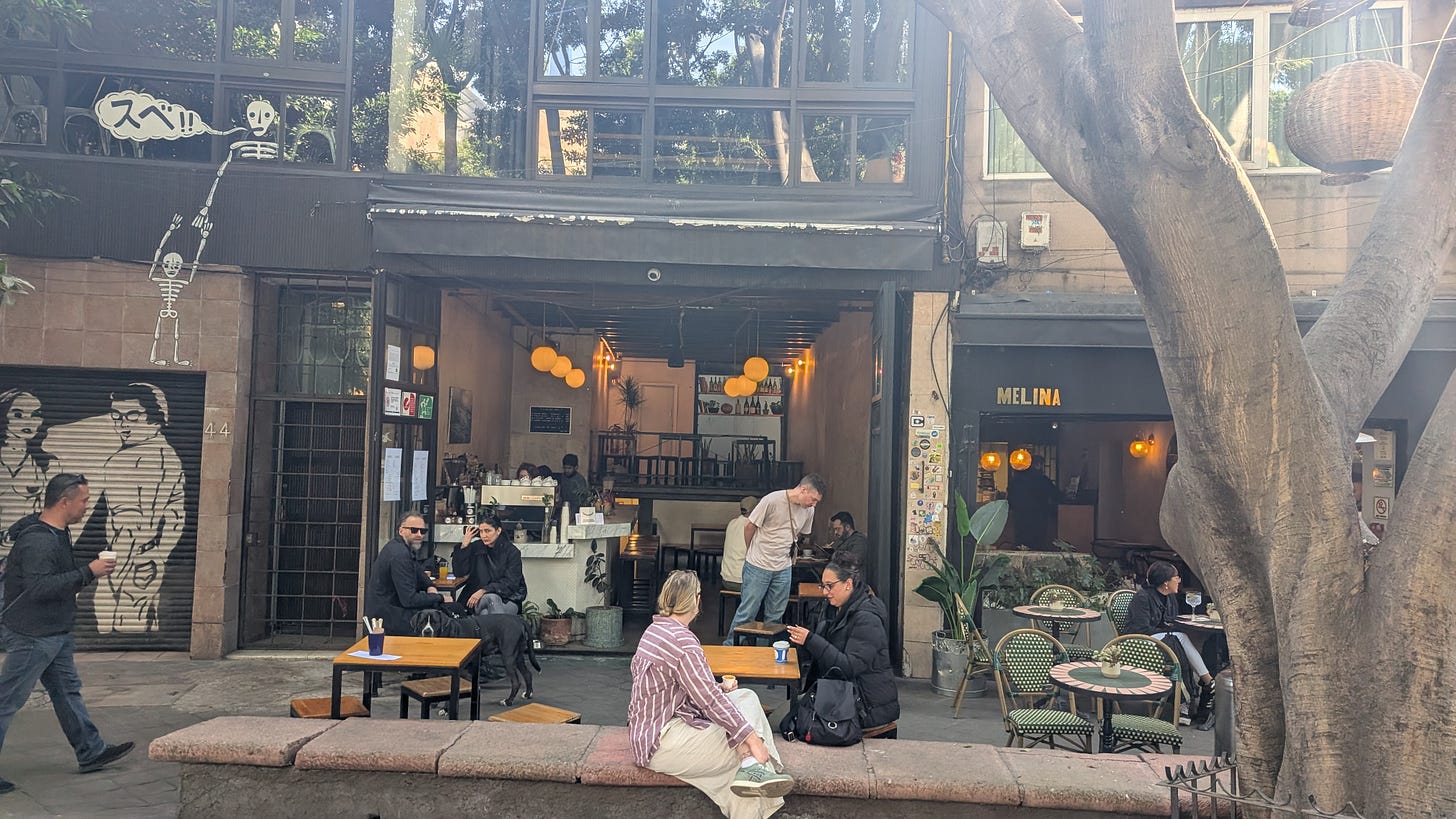
Americans may know Mexican coffee, but they’re less familiar with Mexican bakeries. The two are intertwined. Across the city, you’ll find cortados, flat whites, and the occasional café de olla served alongside fresh pan dulce—whether in a glass case at a trendy café or delivered by a vendor balancing baskets on a bicycle.
We spent mornings wandering between cafés tucked into leafy courtyards, ordering cortados, watching baristas perfect their pour-over techniques, and realizing time just moves differently here.
Third wave coffee in Mexico City is more than a trend—it’s a long-overdue shift. Mexico has grown some of the world’s best coffee for centuries, yet for most of its history, the best beans were exported. Now, local roasters and baristas are reclaiming that heritage with a return to intention. Every element matters—the precise grind, the water temperature, the slow pour that coaxes out unexpected flavors.
The same way a well-made concha is more than just flour and sugar, a well-brewed coffee is more than just caffeine. Each step is intentional—a quiet rebellion against the fast-paced approach we’re used to.
And yes, chocolate croissants may be easier to find than conchas, but if conchas are the queen of sweet breads, then during our visit, we arrived just in time for the king—Rosca de Reyes (kings cake). There are many, many different kinds of Mexican sweet breads to explore but the epiphany we carried home wasn’t just the taste of pastry or the smoothness of espresso—it was the reminder that mornings don’t have to be rushed. That a cup of coffee can be more than a routine—it can be an anchor to the world moving around you—where you are, who you’re with, and the day unfolding ahead.

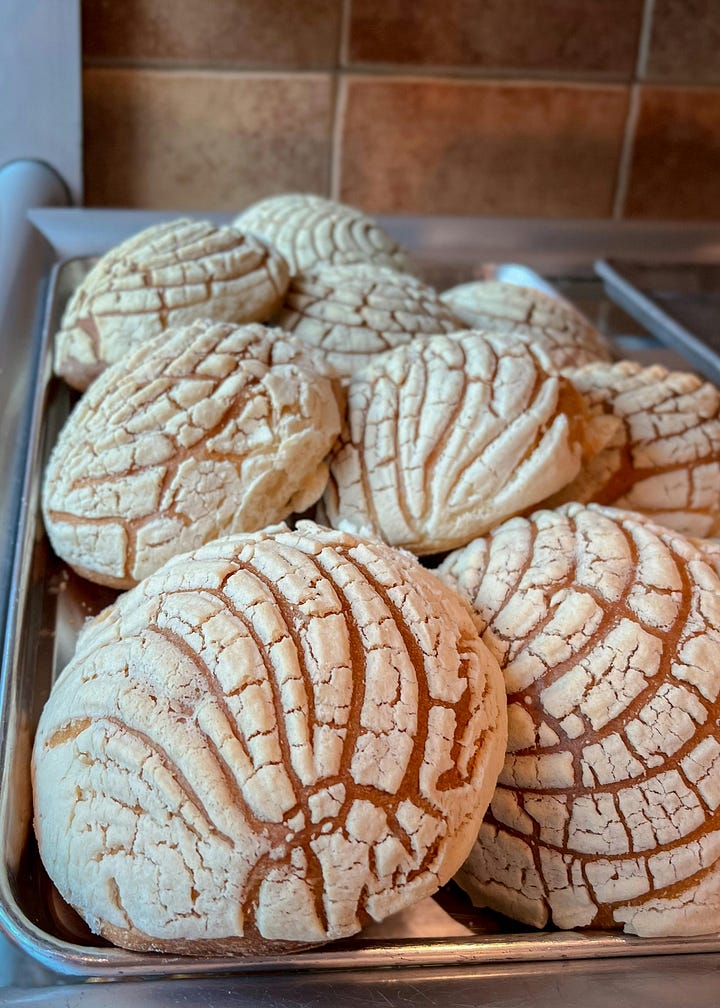
But it wasn’t always like this. For most of its history, Mexico wasn’t even enjoying any of its best coffee. So how did Mexico go from a simple hub of colonial exports to one of the best coffee cultures in the world? Glad you asked.
How Wheat, Coffee & Colonization Shaped CDMX Mornings
Before the Spanish arrived, Mexico’s kitchens were all about corn, cacao, and honey. Wheat? Nowhere to be found. Coffee? Not even a concept.
Instead, people were making rich cacao drinks so beloved that the Aztecs literally used cacao beans as currency, pressing masa into tortillas, and steaming tamales wrapped in husks.
Then, Spain brought on the wheat, ovens, and a deep belief that Catholicism required bread. Communion without bread? Not happening. Sugar came too —but at a brutal cost. The booming sugar plantations that made Mexico’s sweet breads possible were powered by forced Indigenous and African labor, a reality baked into the history of beverages and baked goods the world over. They planted wheat fields, built bakeries, mixed in plantation sugar, and soon, panaderías became a way of life.
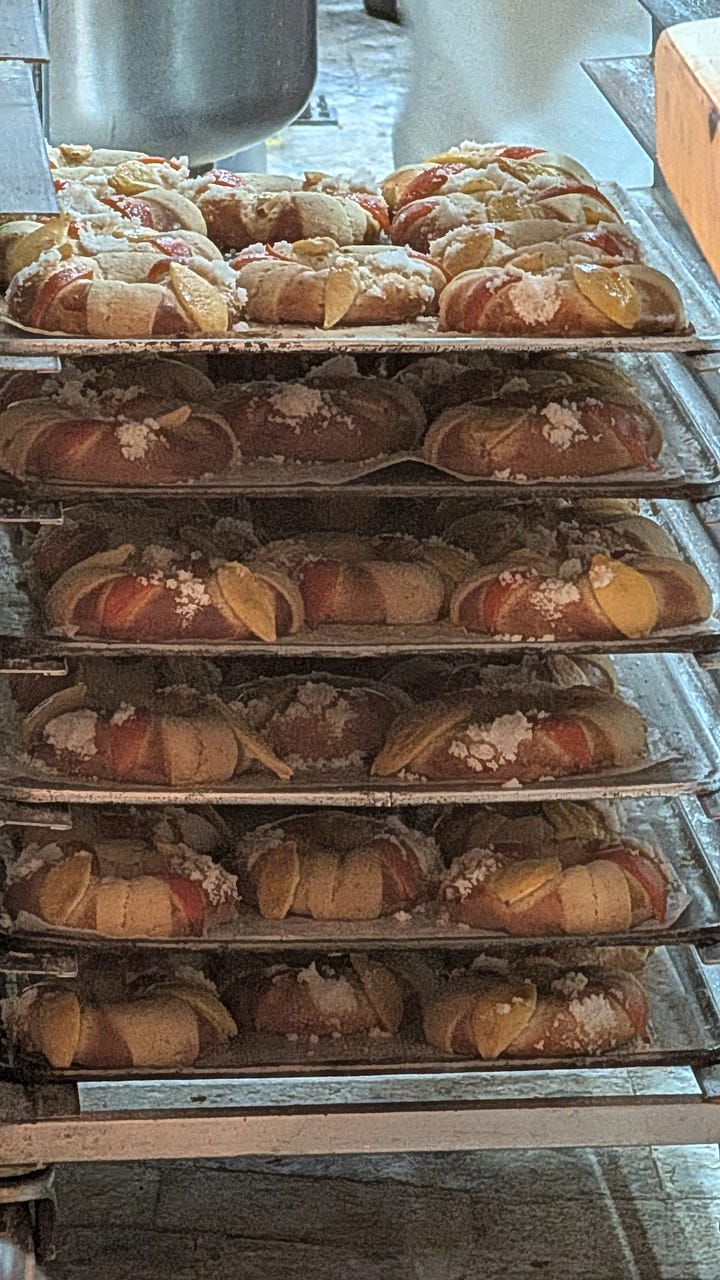
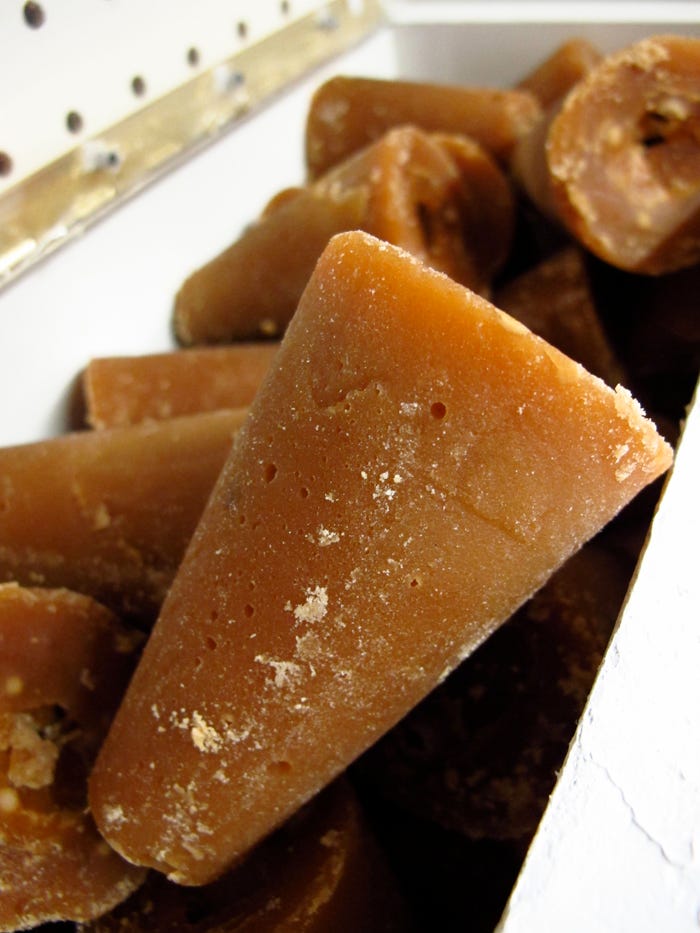
But the real shake-up came later—when France decided to crash the party in the 1860s. Napoleon III installed a puppet emperor (one of the Habsburgs, for my history nerds), and suddenly, Mexico got a brief but deeply influential dose of French pastry culture.
The empire didn’t last, but flaky, buttery pastries absolutely did. Mexican bakers took French techniques and flipped them, adding:
✔ Piloncillo (raw cane sugar)
✔ Anise & vanilla
✔ Tropical fruits like guava
The result? A new category of pastry that was neither fully European nor indigenous, but unmistakably Mexican: pan dulce. Conchas, puerquitos (pig-shaped molasses cookies), and guava pastries became the norm—flavors Paris could never.
Mexico’s Coffee Glow-Up, 300 Years in the Making
Meanwhile, coffee was making its own entrance. The Spanish brought coffee plants in the 1700s, and thanks to Mexico’s volcanic soil and high-altitude farms, the beans thrived. But there was a catch—Mexico wasn’t drinking its own coffee.
The best beans were shipped off to Europe, and what stayed behind? Utility coffee—functional, but nothing to obsess over.

By the 1800s, cafés started popping up in Mexico City. Inspired by European coffeehouses, they became hubs where intellectuals, artists, and rebels gathered over a cup, much like in Paris or Madrid. But instead of delicate espresso cups, Mexico had café de olla—a spiced, slow-brewed coffee made with piloncillo and cinnamon, served in rustic clay mugs that gave it an earthy depth. This was coffee, yes—but coffee on Mexico’s terms.
Meanwhile, panaderías were thriving. The concha, with its soft, buttery interior and signature sugar crust, became a staple. Over time, pan dulce and coffee became inseparable, a daily ritual built on layers of colonial history, indigenous flavors, and global influence.
And yet, for most of the 20th century even as panaderias continued to thrive, coffee in Mexico remained practical, not pretentious. Even as espresso bars gained traction, coffee was often seen as a supporting player, not the main act. Mexico’s best beans? Still being exported.
Then, in the early 2000s, something shifted. The third wave coffee movement—the one that turned places like Portland and Melbourne into coffee capitals—finally reached Mexico City.
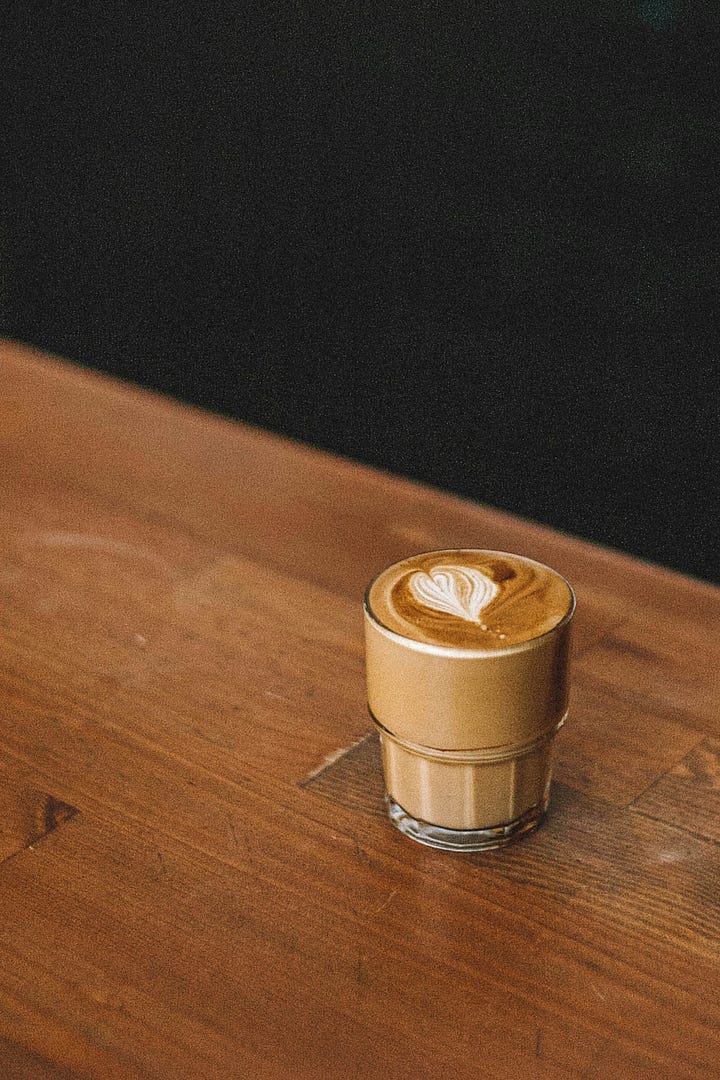
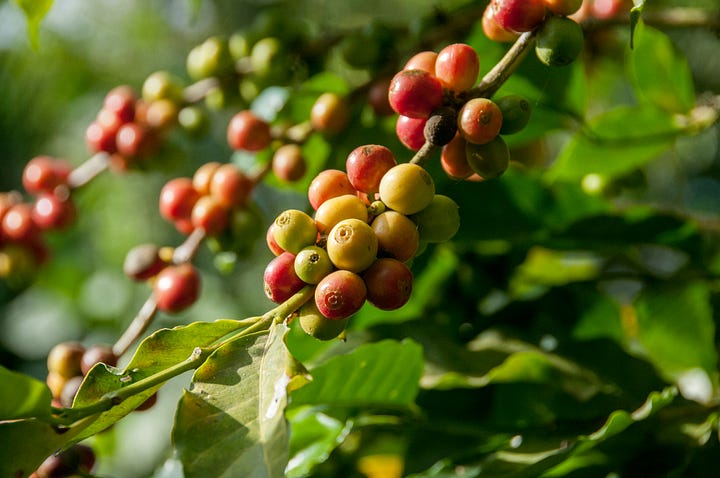
Suddenly, baristas were treating coffee with the same reverence as mezcal, obsessing over single-origin beans from Chiapas, Oaxaca, and Veracruz, perfecting pour-over methods, and talking about altitudes and fermentation styles like sommeliers discuss wine.
Mexico City’s Café & Pan Dulce Culture Today
Now? CDMX is a powerhouse in both café culture and pan dulce, bringing together centuries-old traditions, new-school techniques, and the creativity of a city that never stops evolving. Some bakeries still make conchas the same way they did generations ago, while others are experimenting with matcha, sourdough, and laminated doughs.
Walk into a good café, and you’ll find flaky pastries sitting next to modern espresso machines, americanos and cortados being served next to intricate pour-over setups. Neighborhoods like Condesa, Roma, and Juárez have become hubs for third wave coffee in Mexico City, where baristas highlight single-origin beans and experimental brewing techniques.
But what makes Mexico City’s coffee culture different? Here, it’s still about balance. Coffee can be experimental, but it never loses its roots. There’s still café de olla. There’s still pan dulce on the counter. And at the end of the day, no matter how fancy the brew method, most people aren’t in too much of a rush to enjoy it.
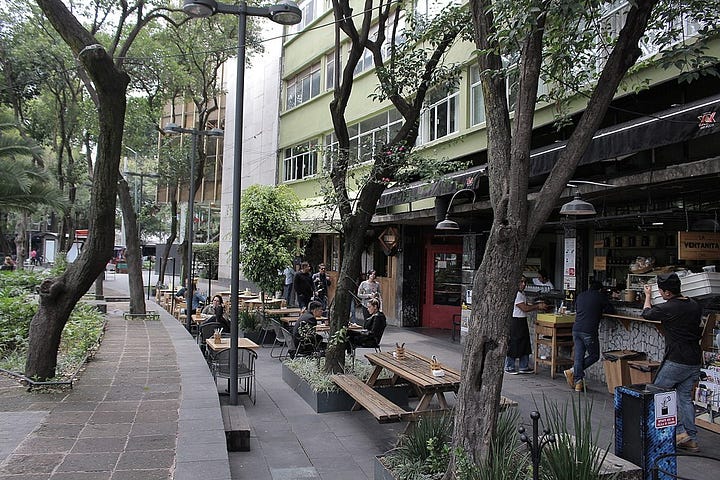
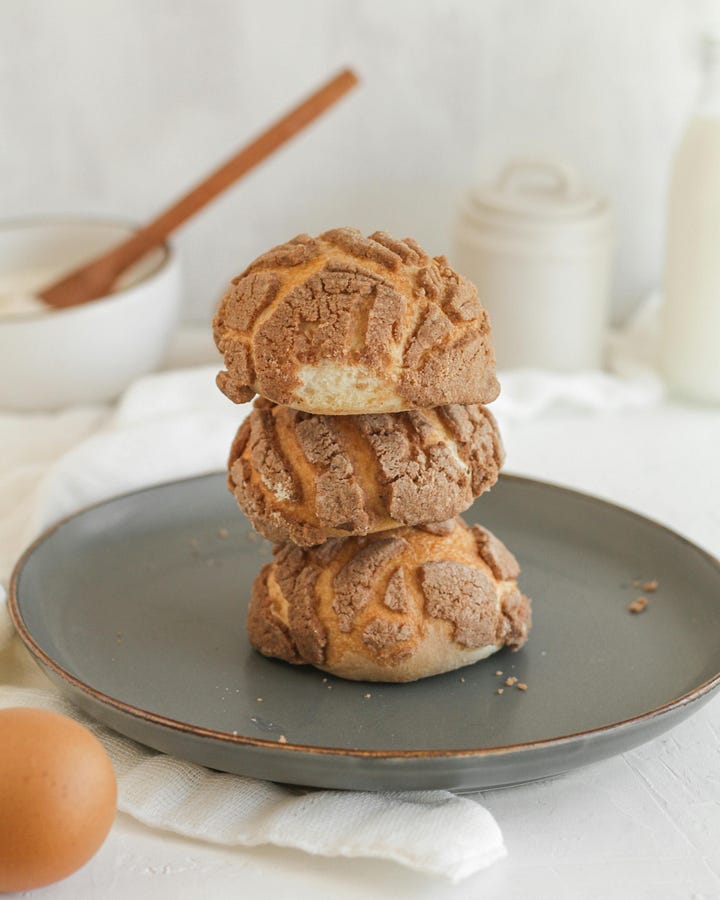
And now that you know the backstory, let’s talk about where to find the absolute best pan dulce and coffee in CDMX—because trust me, not all pastries (or brews) are created equal.
Your Coffee & Pan Dulce Bucket List, But Make It Interactive
The café culture in Mexico City is a full sensory experience—from the deep aroma of perfectly dialed-in espresso to the warm crunch of a lovingly baked concha. Whether you’re after third wave espresso, classic pan dulce, or something in between, want to know the best way to explore it all?
The CDMX Coffee Pasaporte
The CDMX Coffee Pasaporte is your golden ticket to 50+ specialty cafés across the city, each offering a stamp for your passport and a discount—some spots knock 10% off your drink, others give you 15% off a coffee tasting class. The booklet itself is just 125 pesos (~$6) and is available at most participating cafés.
But let’s be real—not all cafés are created equal. If you’re hunting for the best, here’s what to look for:
☕ Roasters who highlight Mexican beans—Chiapas, Oaxaca, and Veracruz are the gold standard. Bonus points if they know the specific farm.
🔎 A menu that goes beyond espresso—Pour-overs, nitro cold brew, or experimental fermentations or ultra-specific grind granularity to bring out unexpected flavors? You’re in good hands.
🎓 Baristas who want to talk coffee—Not in a snobby way, but in a “let’s get nerdy about this” way.
🥐 A pastry case with more than just croissants—If you see fresh conchas or guava pastries, grab one.
This passport isn’t about ticking off boxes—it’s about understanding what makes Mexico’s coffee culture unique. Whether you’re hunting for a perfect cortado in a tiny café in Juárez or settling in for a ten-course coffee tasting at Yonke, this passport is your excuse to sip your way through one of the most underrated coffee cities in the world.
If paid membership isn’t in the cards for you right now —everything is expensive right now, we get it — a one-time donation in any size helps us keep the feast going.
Pan Dulce: The Sweet Tradition Worth Seeking Out
Coffee and pan dulce go hand in hand in CDMX. The cafè experience in Mexico City is about slowing down, but it’s also about paying attention. And perhaps the most rewarding way to do that is with pan dulce. True, pastries exist everywhere, but Mexico’s take on them is deeply unique—a blend of Spanish wheat, French technique, and indigenous flavors.
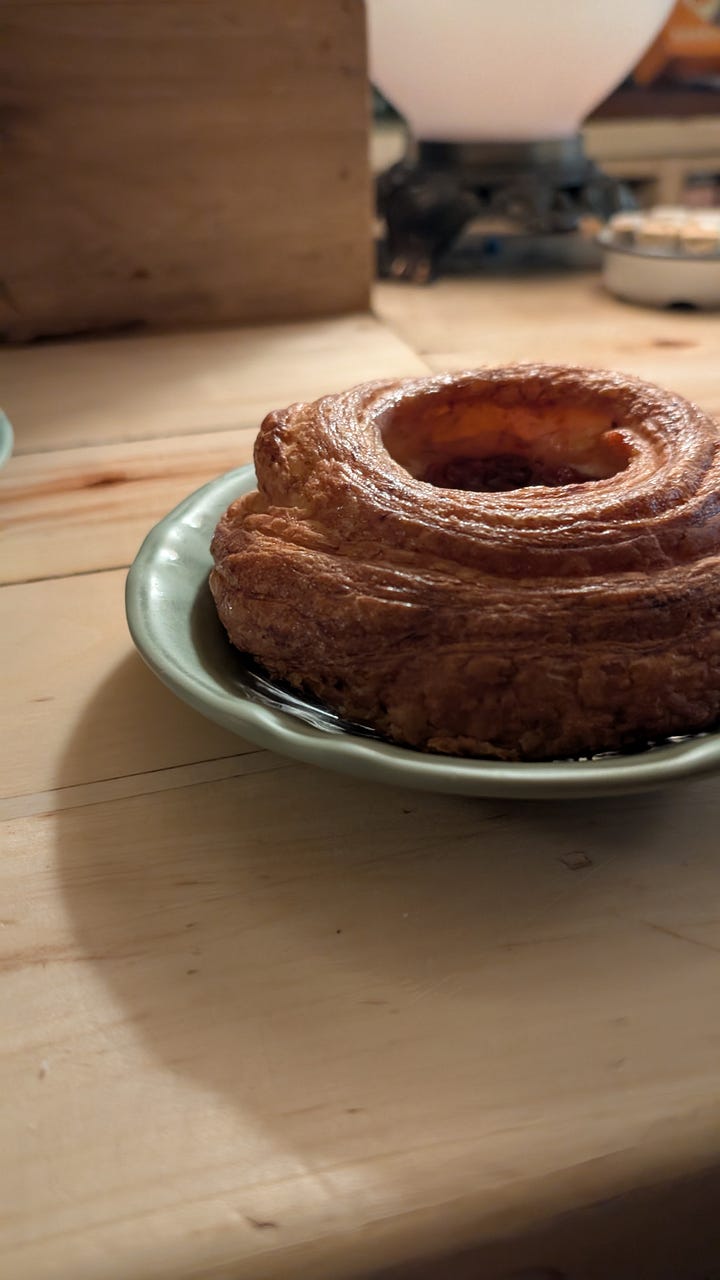
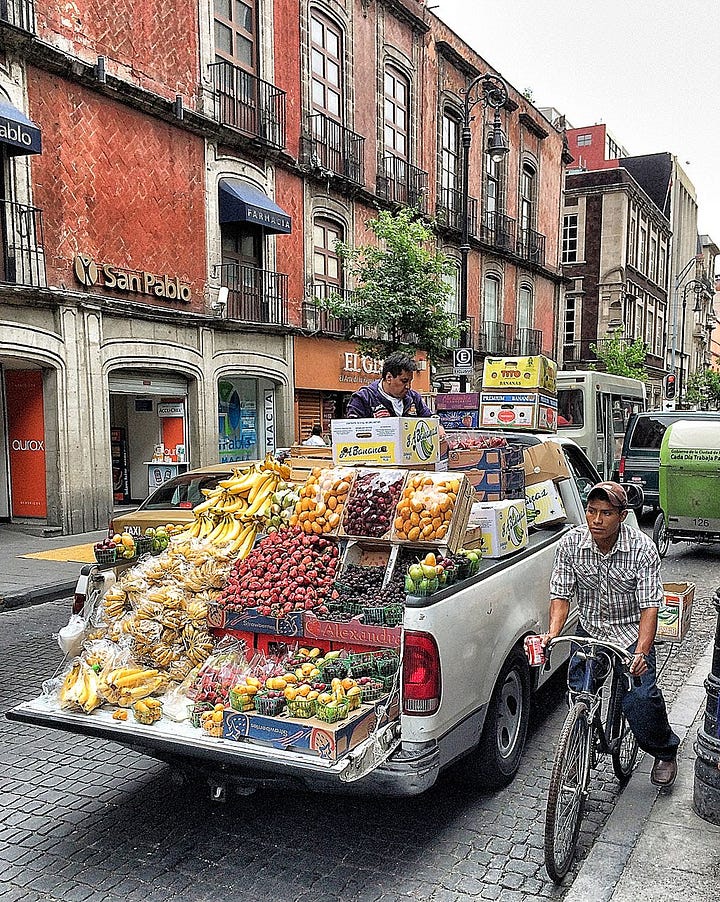
There’s something special about tasting them here, where the air itself carries the scent of fresh bread and ripe fruit. Mexico’s fresh fruit is so fragrant it stops you in your tracks—especially the guavas. One bite of a guava-filled pastry, and you get why people are obsessed. I literally caught myself pausing to smell fruit carts more than once—just on my way to the bathroom in the back of a café. The air was thick with sweetness, bursting with an unparalleled ripeness that I’ve only ever experienced in part maybe at peak berry or apple season over years around my grandparents’ lush Pacific Northwest farms.
While conchas are the most recognizable, the variety is endless. But finding a truly great pan dulce? That takes a little know-how.
What to Look for in a Great Concha (or Any Pan Dulce)
🍯 Sugar Topping (when present) – Crisp, slightly crumbly, and deeply flavorful. It shouldn’t just be sweet—it should have notes of vanilla, chocolate, or spice. If it flakes off in dry chunks, it wasn’t made with care.
🎂 Texture – The inside should be soft, airy, and balanced between fluffy and chewy. No one wants a dry, dense pastry.
👃Aroma – A good pan dulce smells like butter, vanilla, and warmth. If it doesn’t make you take a deep breath before biting in, something’s missing.
🥖 Freshness – Pan dulce is best the day it’s made. If it feels stiff or stale, it’s past its prime.
🍫 Balance of Flavors – A great concha isn’t just sugar overload. The best ones have a balanced sweetness that lets the soft, buttery bread shine.
No matter where you are, these tips will help you spot the best pan dulce in any city. And if you find a place that nails all of these? Congratulations—you’ve struck panadería gold.
Where to Get the Best Pan Dulce & Coffee in CDMX
The perfect cup of coffee deserves the perfect pastry, and Mexico City delivers on both fronts. Here are a few of our personal favorites:
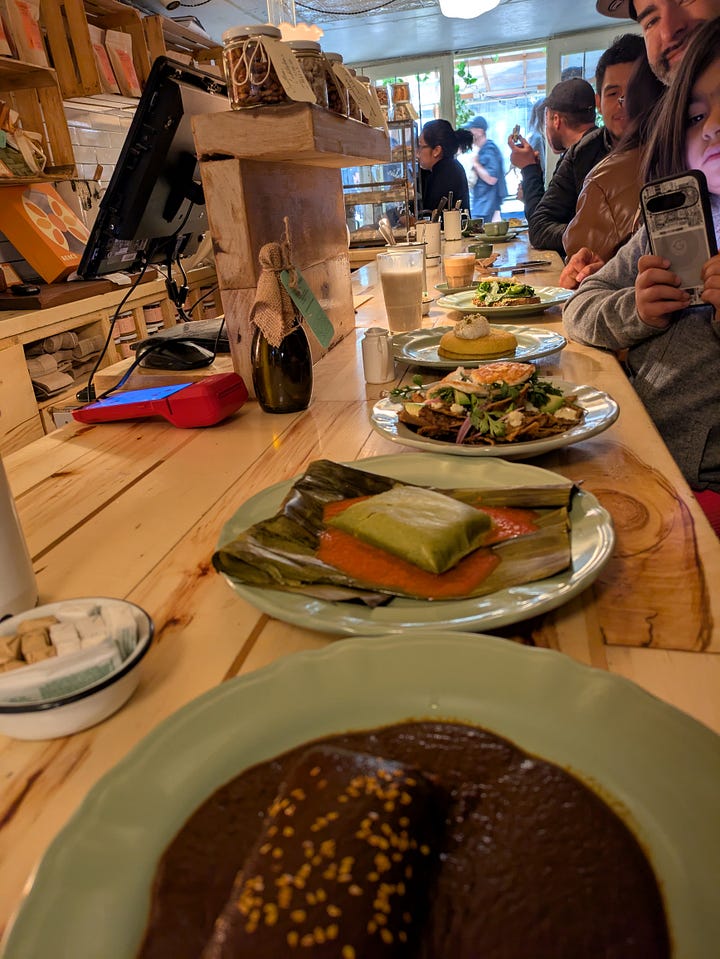
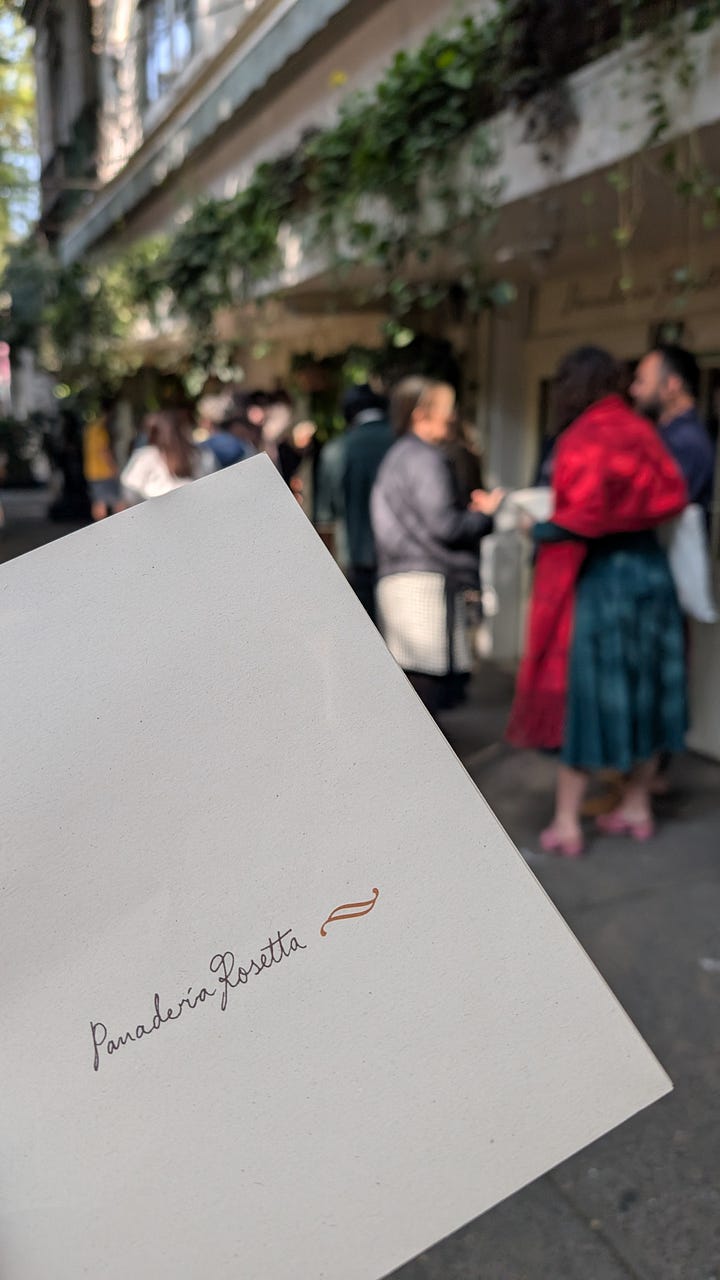
Panadería Rosetta
If there’s one spot that everyone talks about, it’s Rosetta. Chef Elena Reygadas combines traditional Mexican flavors with European technique, and the result is next-level pan dulce. Think guava pastries with the flakiest layers you’ve ever seen, a concha that will ruin every dry, sad version you’ve had before, and a full service brunch restaurant atmosphere that’s fancy, but never pretentious.
El Minutito Café
A tiny, tucked-away spot near Reforma with classic French café vibes and meticulously crafted pastries. If you’re near the city center, it’s a perfect quiet escape. We kept coming back—for the espresso, for the croissants, for the atmosphere.

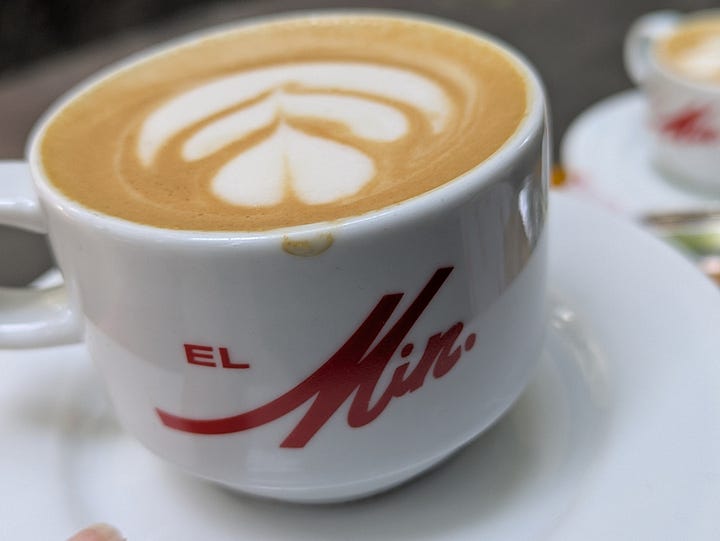
Brew Brew
A Roma Norte favorite, Brew Brew is the kind of place you stumble into for a quick coffee and end up staying for hours. Gorgeous open space, seriously good espresso, and a solid pastry lineup.
Your Neighborhood Panadería
Listen, plenty of the best pan dulce isn’t Instagram-famous. It’s in neighborhood panaderías, where trays of fresh bread fly off the shelves before they even cool down. This beautiful tradition has been carried all over the world and some look prettier than they taste, but with a little hunting you can probably find or make some where you are today. If you see a bakery where locals are walking out with giant paper bags, especially if they check all the “what to look for” boxes above, that’s where you want to be.
Stop Rushing. Start Sipping.
Mexico City isn’t in a hurry. And honestly? It doesn’t need to be.
Here, a morning isn’t just about waking up—it’s about taking your time. It’s about grabbing a fluffy, sugar-crusted concha from a panadería that’s been perfecting the recipe for decades. It’s about sipping a pour-over made from Oaxacan beans or one more sweet little cortadito. It’s about watching the city unfold around you—slowly, intentionally, the way mornings are supposed to go, and afternoons stretch lazily into more coffee, more conversation, and the slow unraveling of a day well spent.

So when you find yourself in CDMX, follow the scent of fresh pan dulce. Whether you’re sitting in a tiny hole-in-the-wall café in Juárez or a hyped specialty shop in Roma, do as the locals do: Order something good— a velvety flat white, a V60 pour-over, or hell, whatever the barista is most excited about. Take your time. And enjoy the fact that you’re in a city that knows exactly how to start the day.
And if you find a café so good you don’t want to leave? Stick around, they’ll show you how to end it, too. You’ll start to notice the coffee bars don’t close—they just change gears. By sundown, the baristas don’t stop pulling shots—they just start adding liquor. And suddenly, everyone’s drinking a cocktail you don’t see on U.S. menus nearly as often as you should.
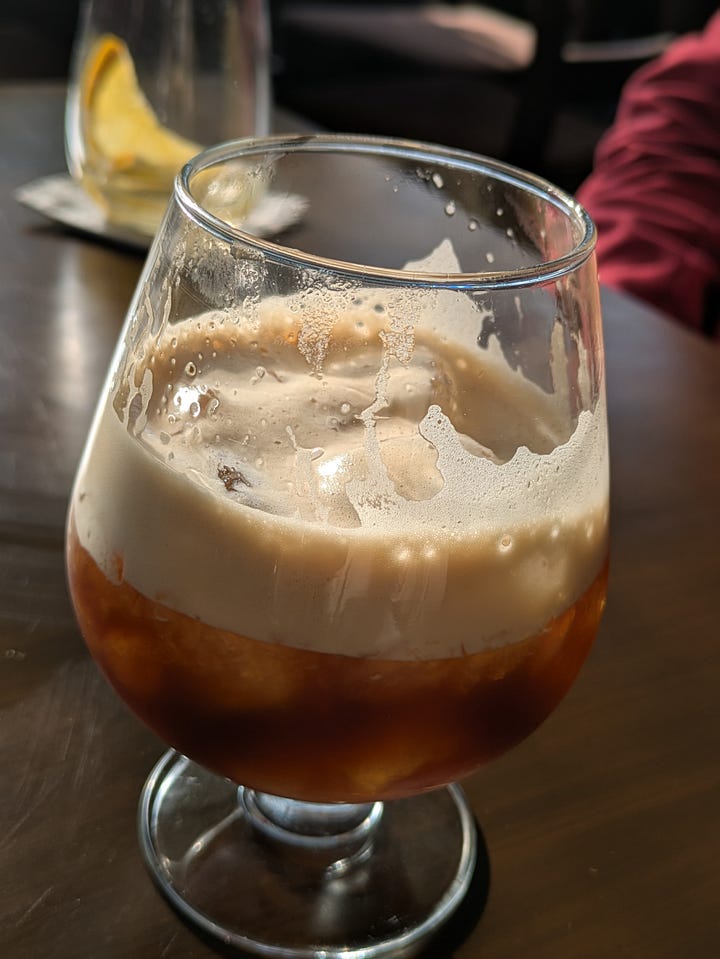
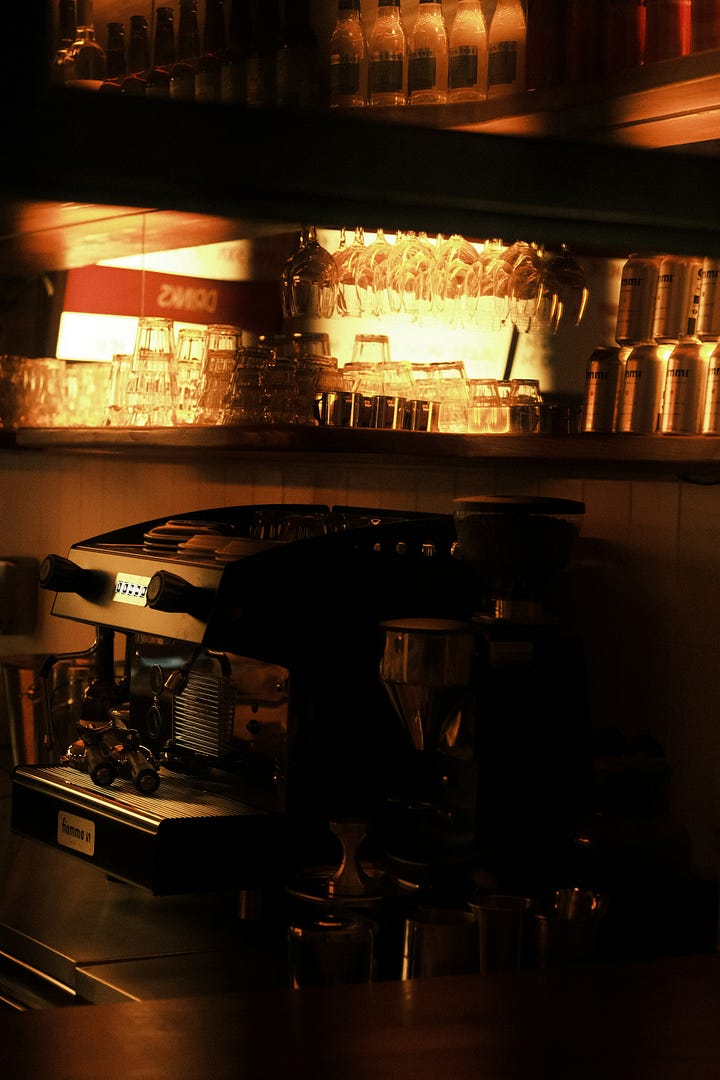
Next up? The carajillo. It’s smooth. It’s strong. It’s got just enough caffeine to make you say ‘one more round.’ It’s the underrated Mexican cocktail you’re about to fall in love with.
Access our full Mexico City café recommendations by becoming a supporting subscriber
Keep reading with a 7-day free trial
Subscribe to Feast Mode to keep reading this post and get 7 days of free access to the full post archives.



